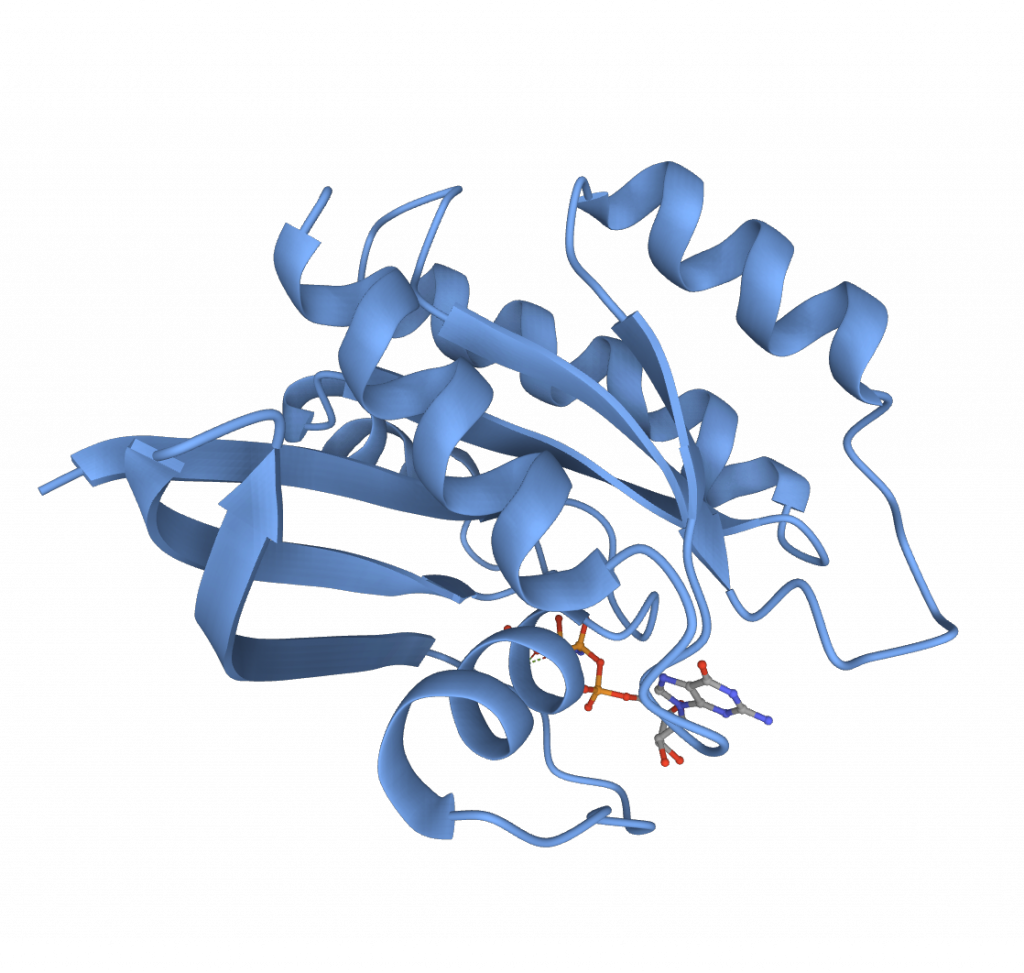Levels of protein structure – tertiary
The spatial arrangement of secondary structure elements results in the formation of the tertiary structure, or fold, of a protein. The tertiary structure is held together by non-covalent interactions (hydrogen bonding, ionic interactions, van der Waals forces, and hydrophobic packing), disulphide bonds and metal ion coordination.
An example of tertiary structure is a single-domain globular protein. Globular proteins (6) are sphere-like proteins that are more or less soluble in aqueous solutions (the other two protein classes are membrane and fibrous proteins) (Figure 13).
